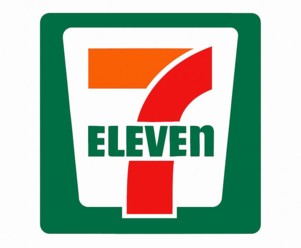Feeling Stub Stumped? 5 Keys To Reading A Pay Stub Correctly
By Davis Clarkson , June 29 2020

Hooray! It's payday and that either means a check is on its way or the money has already been deposited into your account. That means there's nothing left to worry about, right?... Wrong! In fact, many workers make the mistake of looking only at the amount that they received in that week's paycheck. There is so much more you should be checking out.
Whether you realized it or not, there are several segments that go into reading a pay stub. Here are the 5 key factors of reading your next pay stub and why you should take it seriously for the next time around.
1. Taxes
One of the biggest things you're going to want to keep an eye on is what's being taken out of your paycheck every few weeks. Start off by making sure that all of the information listed, such as your name, address, social security number, etc. is all correct. This will be important during tax season for filing purposes. Next, you'll want to keep an eye on your paid time off balance and see that it lines up with what you've got in your records.
You'll want to report that as soon as possible before it's too late to be switched back. Now you need to ensure that all necessary withholdings have been taken out and accounted for. If you're not sure which benefits are usually taken out, just line up a few of your recent pay stubs to see if they all include the same withholdings. Also, be sure to do the math on what was taken out.
While incorrect math is rare on paystubs, it can happen so you won't want to take that chance.
2. Earnings
Next up is making sure that you're earning exactly what you're supposed to within any given pay period. To do this efficiently, you need to keep a schedule of when each pay period closes and ends, as well as when you'll be paid out on it. For example, most companies that pay employees on Friday have a pay period that ends the prior Sunday.
So if you worked overtime the Monday of that week, you won't be paid on it until the next paycheck. Once you know the pay period, check to see how many hours you've logged and done the math on your hourly rate (assuming you're paid hourly). If your company offers online pay stubs, be sure to take advantage and do the calculations to make sure you were paid correctly.
A simple accounting error could lead to you missing out on hundreds of dollars, so be diligent.
3. Benefits & Deductions
If you have any employee benefits at all, then you should be checking your pay stubs every pay period to make sure it's being taken out. Not having it taken out means there's something wrong with that program, and you need to contact HR right away. This could be anything from your 401(k) plan, life insurance, health, vision, dental, flexible spending account, the list goes on and on.
Make sure that the correct amount is being taken out. That will assure you that a) you're on the plan you agreed to and b) you aren't being charged more than what's necessary. If not caught, being charged more on a benefit will add up to a significant amount over time. Should you not see a benefit listed on your pay stub, it means that a mistake has been made somewhere down the line.
You may not be enrolled in certain benefits that you thought you were.
4. Employer Contributions
Take the time to carefully read through any contributions your employer claims to make on the benefit programs that you're enrolled in. For example, if they say they'll match your 401(k) contributions up to 5%, then make sure to calculate that and make sure it's correct. If you don't see it on the pay stub (you know the drill by now) contact one of your human resource representatives immediately.
A simple calculating error may be the problem. They can get it fixed for you and compensated on the next paycheck. Be sure to also keep a watchful eye out on the year to date contributions. If the calculations seem off, go back on your previous pay stubs to find the whole story.
5. The Correct Template
Whether you realized it or not, there are several different templates for a pay stub that your employer can choose from. Without the proper template, the information can seem too jumbled together or too spaced out. If you're struggling to read the pay stub, bring it to the attention of your direct superior, HR representative, or accounting personnel.
The template should be chosen based on the number of benefits and deductions that need to be spelled out. It should serve as a helpful guide for those reading it, not as a message that they have to try and decode.
Reading A Pay Stub Correctly Is Vitally Important!
Now that you've seen the 5 keys to reading a pay stub, it's time to place a new premium on checking your facts. Being diligent on your pay stubs ensures that you're being compensated fairly and your money is going into the right places. Be sure to read up on why a pay stub is important for more helpful information on the specifics you should be looking for.
Now let's get to the good part. In just a few minutes, from the comfort of your home, you can create your own paystubs online with the paystub generator. Just fill, submit, download or print!
Similar Articles
We’ve helped numerous individuals and businesses create professional documents! Create yours today!










